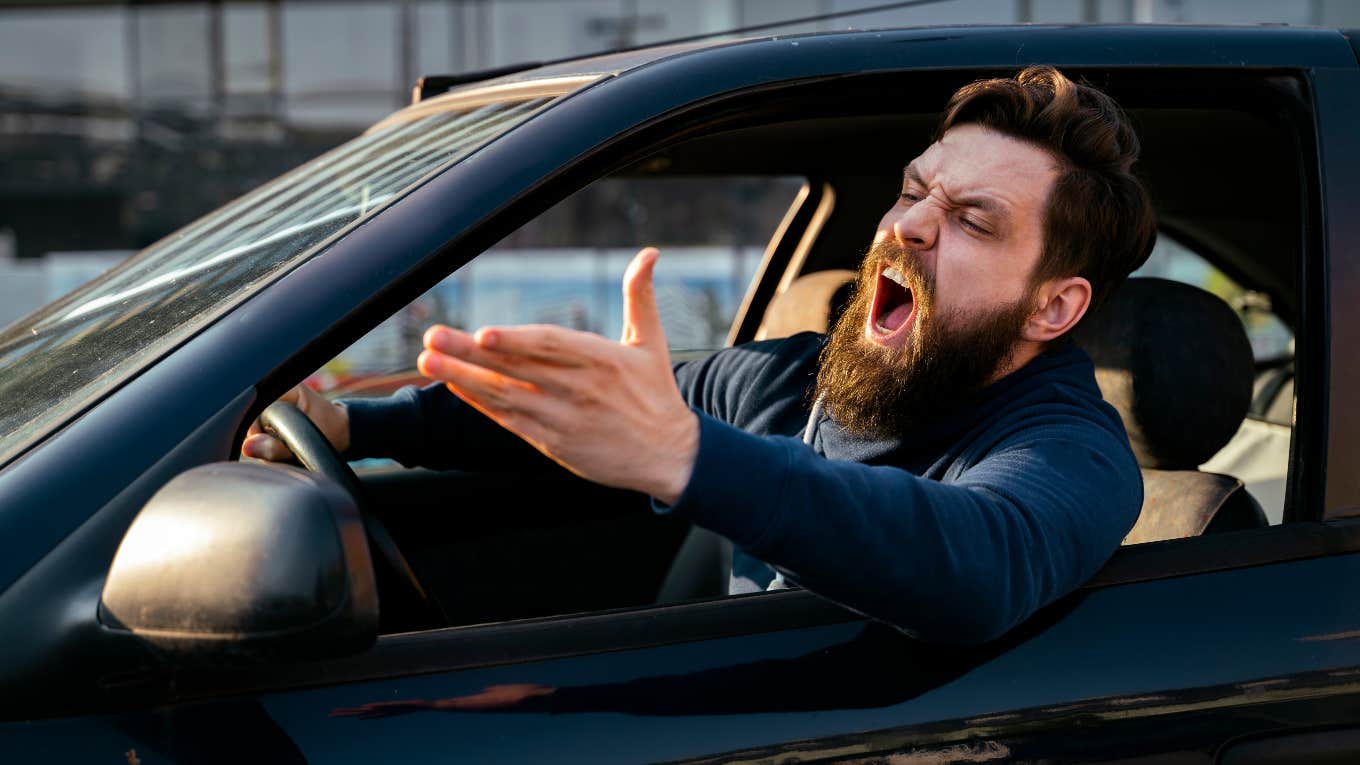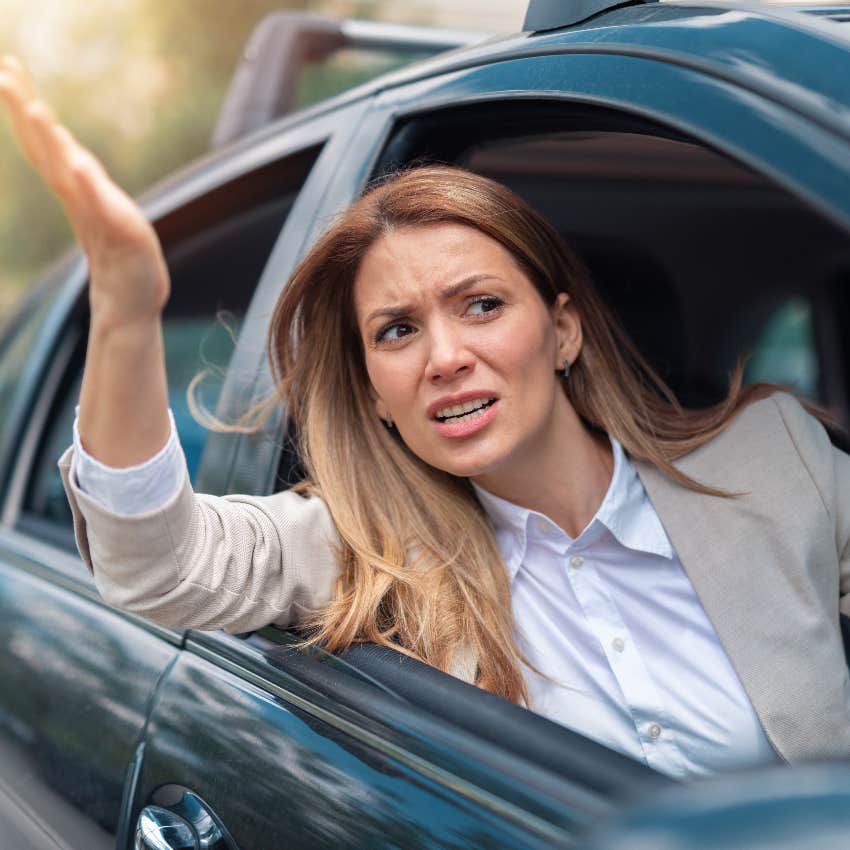How To Respond To Road Rage Like A CIA Operative, According To A Former Agent
The #1 way to deal with road rage is to simply not deal with it at all — it's just not worth it.
 Phoenixns | Shutterstock
Phoenixns | Shutterstock Nearly everyone with a license has dealt with road rage at one time or another. For most of us, it's just people being garden variety jerks, tailgating or flipping the bird. But every now and then, a road rage incident takes a sharp turn into actual danger — and with increasing frequency, according to statistics.
In a TikTok, a former CIA agent gave some tips on how best to deal with road rage, methods she learned during her career in intelligence and the military. While it may sound a bit counterintuitive, her advice just might save your life if you encounter someone truly unhinged.
The former CIA agent offered tips on how to respond to road rage like an operative.
Tracy Walder is an author and former FBI and CIA agent whose book "The Unexpected Spy" details her time working as a special agent in counterterrorism. So you might say she knows a thing or two about dealing with aggression and danger.
Walder was inspired to share her take on road rage following the horrific story of Ohio woman Megan Keleman, who was murdered in August during a road rage incident in a Taco Bell drive-through by a man, Jason Williams, whom she pulled in front of to enter the drive-through line.
After first ramming Keleman's car, Williams then got out of his vehicle and shot Keleman to death before turning the gun on himself. For Walder, Keleman's story is a cautionary tale, especially as violent road rage incidents continue to increase nationwide and at much steeper rates in certain parts of the country.
The CIA operative shared the two-step road rage procedure she was taught in law enforcement — and it starts with not responding at all.
"The biggest thing that we learn at the CIA," Walder said, "is when we have situations when we are in our vehicles, and we are confronted with danger, is to actually get off the X." That's a military term that means to get away from an incident or point of attack as soon as possible.
"I know that goes against human inclination to sometimes respond when presented with these aggressive situations," she said. Most of us usually at least flip a finger in return, if not worse. "But we have to try to overcome that and get off the X, off of the place of danger."
In Keleman's case, that might have looked like leaving the drive-through entirely if possible — though, of course, that often isn't an option in many drive-through designs and Walder stressed she wasn't criticizing Keleman's handling of her situation.
But if the option to get out is there, Walder said to note the person's license plate number if you can and then get away, even if it means leaving the scene of an accident, as in Keleman's case.
"Because the reality is, if someone is that upset and that unhinged… that is not someone that, in my opinion, is safe to engage with, even to exchange information," she stated.
Once you've gotten away from the person, she advised finding a safe spot to stop, calling law enforcement, and reporting the license plate number and incident. She also said to specify that you are in danger.
But it's crucial not to respond in any other way. "I know when you are in a very aggressive situation like this, you want to do and say something, but in my opinion, it's not worth it," she said. "I can't tell you the amount of times that someone's riding my tail, and I just move over. I know it's frustrating, but … you do not know what that other person is thinking."
Road rage incidents have been rapidly increasing, especially in certain parts of the country.
Road rage has long been an issue, but in the past decade, it has skyrocketed — including road rage incidents like Keleman's involving shootings, which have gone up by a shocking 449% since 2014.
Texas seems to be among the worst states in the country when it comes to road rage incidents. In a recent Washington Post exposé, the paper spoke to the leader of a traffic safety nonprofit in the state, Dean DeSoto, who chalked it all up to one thing: whatever is going on in the country shows up on the roadways.
 DexonDee | Shutterstock
DexonDee | Shutterstock
What he means is that the inordinate stresses of recent years, from the pandemic to, perhaps especially, the political climate that is tearing us apart, are manifesting in increasingly dangerous situations on the road.
DeSoto even said that he considers road rage reports to be a sort of barometer for how high these tensions are running. It's a frankly heartbreaking barometer of the state of our societal mental health when you really think about it.
The statistics, unfortunately, bear out DeSoto's theory. Road rage shootings nationally have doubled since 2018, according to a gun safety organization the Post spoke to, the Gun Violence Archive. In fact, road rage shooting deaths have increased by 89% just since 2020 alone.
One day, of course, we will be past this dark time, and if DeSoto's theory holds, road rage incidents will begin to decline. Until then, Walder's advice to not engage is essential. Things are simply too chaotic out there, and it isn't worth the risk.
John Sundholm is a news and entertainment writer who covers pop culture, social justice, and human interest topics.

